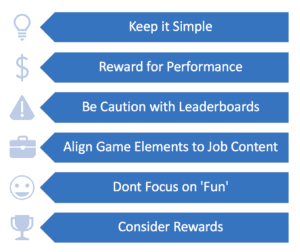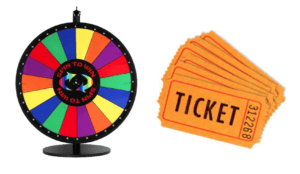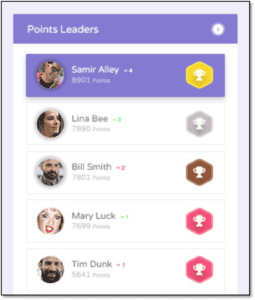AchieveUnite’s Gamifying your Channel Programs Series is a three-part series aiming to show how gamification can effectively change the way you engage, motivate, and activate your channel users.
In our last article, we described the two types of gamification – structural and content – and provided some best practices to follow when developing your overall gamification strategy. Now, let’s delve into how to use gamification most effectively in your channel programs.
 Gamification Principles
Gamification Principles
There are some high-level principles that will help you maximize the efficacy of your gamification. These principles are applicable to whatever type of gamification you employ – structural or content. Review these principles before selecting your game and after designing it to confirm that you have considered and employed them.
Keep it Simple
Keep game complexity simple, particularly when you are using a game to support activities, such as training, registration, or sales incentives. Do not over-complicate a game with lots of game rules or game elements. Elements are things such as resources, competition, chances, scoring, or rewards. Doing so increases the cognitive load on your participant and makes it harder—not easier—to engage.
Reward for Performance
Reward players for performance, not completion. If you are going to award points within the game, those points need to come from demonstrated results or knowledge, not just progress. Leverage structural gamification elements like progress meters to show and drive progress within activities.
Be Cautious with Leaderboards
Leaderboards can be fun but be sure you focus on more than who is on top. Consider letting people see more about themselves rather than just where they rank against other players. Show individuals improvements made over time, personal bests, and so forth. Consider team-based comparisons, such as by location or role, as opposed to just head-to-head individual comparisons. This is particularly true in the channel as there can be many participants. It can be demotivating to see that you are ranked 8125 out of 25000 participants.
Align Game Elements to Job Context
Align the game element choices you use to the learner’s actual job context as much as possible. In other words, avoid competition in a game if the job requires cooperation and collaboration. If you want a sales rep to work with a sales engineer, don’t make them compete in a leaderboard for deal registration.
Also, be sure to mirror job context. If in the real-world scenario, the goal for a sales team is to hit a new sales tier, mirror that goal within the game. This reduces cognitive load on your learners since they don’t have to distinguish what’s true in the game from what’s true in their job.
Don’t Focus on Fun
Stop thinking you must make the game super fun. In fact, fun doesn’t really matter if the focus is on optimizing outcome. What matters is relevance and a game design that reinforces and enhances the instructional design. Granted, a game needs to be “fun enough” to keep your player involved in that game. Everything is relative. It is more fun to have a chance to win a reward than it is to fill out a lead fulfillment form. The ‘fun” is mainly that the game changes the engagement to something new.
Consider the Rewards
Gamification can be utilized with both monetary and non-monetary awards. It may be enough to earn a badge or be number one on a leaderboard for many activities. However, monetary rewards for games increase engagement since we all like to win something of value. The choice of if and how much to offer depends heavily on your goals as well as your budget.
Gamification Tactics
There are many game tactics that can be employed with your channel participants. Listed below are several common examples that are likely to be familiar to your players. They are proven tactics to drive performance and they don’t require participant training or much time to develop. In fact, many channel platforms today have many standard games already available and employing them is as simple as a 5-minute configuration.
Leaderboards
Leaderboards motivate channel sales reps or others by leveraging competition towards a specific goal. They serve as a public and centralized location for participants to see where they are relative to others for an action, inspiring them to achieve more. This transparency engages participants as they compete with others and strive for the highest position on the leaderboard, knowing exactly what must be done in order to achieve it.
Watch out for leaderboards. They can create a positive impact for those able to win the game but can create a negative impact for those have no chance of winning or for those who did not want to participate in the first place. Keep in mind you may need to mask participant names so partners can’t see other partners’ top performers.
Games of Chance
Games of chance like Spin-to-Win and Lottery allow winnings to be randomized. Having randomized winnings increases the likelihood a program participant will engage because there is a possibility to win with every completed action. Having the possibility to win a larger prize increases the level of engagement. Just like in state lotteries, the chance to win millions increases the number of people participating. The chance to win $100 or $500 can drive significant engagement in the channel. Most games give the administrator the opportunity to control the probability of winning each reward providing budgetary control.

Level/Tiers
Levels and tiers show program participants what is required to achieve each reward level. Higher performance delivers a higher reward and motivates the player to reach the next performance level. Tier widgets show a player where they stand in each tier and what is needed to hit the next level. Level or tier programs are very effective as they pay for performance and not just for participation.
Badges
Achievement badges recognize completed actions by participants. Badges can be used to recognize engagement like logins or can be used to recognized status like training certification or quarterly sales goal achievement. Badges are motiving as they demonstrate attainment of a goal and let the user as well as the community publicly see a participant’s achievement. Badges are best used when highly visible to the individual as well as to the overall community. Showing what badges have been earned as well as what badges are yet to be earned drive the participant to collect all available recognition levels.
Timers
Timers incentivize actions that have a limited timeframe to complete. Timers, typically showing time remaining, instill a sense of urgency which serves as motivation to complete the goals sooner rather than later.
Percent Complete
Percent complete widgets are useful to let the participant know how far they are from finishing a desired action. That action could be completing their registration or depicting how far they are from the next goal or tier. We all want to be “A” people and percent complete games drive the user to achieve 100%.
Conclusion
Adding game elements to your channel drives engagement, achievement and creates an atmosphere of fun. Game elements can be used to support many performance objectives in the channel and are best used in combination to achieve maximum results.
In our next article, we will get a little more esoteric and talk about why gamification works, particularly in the channel. Stay tuned.
Are you ready to accelerate your channel strategy? It’s what we do. Reach out to us today!






